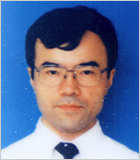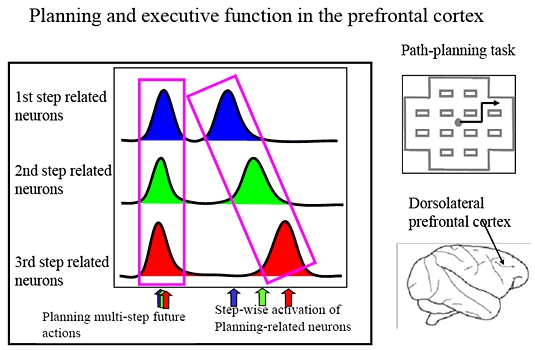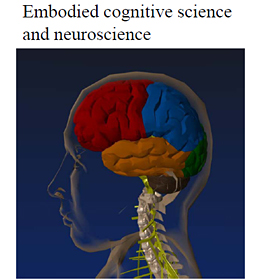Members
Hajime Mushiake (Neurophysiology)

Prof. Mushiake has graduated Tohoku University School of medicine and received PhD from the same university. His career started as a research associate since Dr. Jun Tanji moved to Tohoku University in 1987. The main theme of his research was to understand functions of higher-ordered motor cortices including the supplementary motor area and premotor areas. For 1989-1993, he worked abroad as a postdoctoral fellow in the State University of New York in Syracuse under supervisory of Dr. Peter Strick and investigated functions of the basal ganglia and cerebellum. From 1993-1996, he worked as a researcher of PRESTO, sponsored by JST and started to investigate neural mechanisms underlying problem-solving behavior. Since 2005, he has been a professor of Department of Physiology of Tohoku University as a successor of Professor Tanji. Now his research interest covers neural mechanisms underlying voluntary actions and cognitive behavior. He also collaborates with engineering researchers in an interdisciplinary approach based of embodied cognitive science. He has recently published a textbook of motor learning and rehabilitations with Dr. Kubota and Dr.Miyai in Japanese: Brain and Learning
- Introduction of Research
-
General scope of our study is to understand how the brain works in goal-directed behavior. Recent progress in cognitive science and system neuroscience has significantly altered concepts of how the brain works to achieve functional operations required for cognition, action, memory and emotion. The time is ripe for studying the integrative aspects of brain function in detail using analytical methods. In our department, we have been investigating how individual areas in the cerebral cortex take part in generating purposeful motor behavior. Our main interest is to investigate cellular mechanisms to construct spatial and temporal patterns of activity required to plan to solve various cognitive problems.
As a result of recent studies, it has been established that multiple areas exist in the cerebral cortex that are crucially involved in controlling motor behavior. Our goal is to clarify how individual areas take part in determining what motor act to select and prepare, and how to generate spatial and temporal motor patterns from the viewpoint of embodied cognitive science. According to this view, any organism, such as a human or animal, or even a robot, is considered an embodied agent that interacts with its environment. To achieve our goal, we employ physiological techniques such as analyzing the activity of single cells in motor task behavior in primates, pharmacological techniques to apply chemical substances in situ, or histological techniques.
Recent findings from our laboratory: 1. We have found similarities and differences in neuronal activity in the premotor cortex and supplementary motor area compared to that in the primary motor cortex, in relation to a variety of motor acts. 2. We have defined the presupplementary motor cortex (pre-SMA) using physiological criteria, and found differences in the activity properties of cells in the pre-SMA and the SMA.3. We found that the SMA and premotor cortex are involved differently in preparing and controlling sequential and continuous movements. 4. We found that neuronal activity in the SMA and pre-SMA are particularly useful for preparing multiple movements in a different order. We also found that the pre-SMA cells are particularly active in updating a new behavioral sequence. 5. We found that the cingulate motor area, mostly its rostral part, is crucially involved in selecting appropriate movements on the basis of reward evaluation. 6. We found that the rostral part of the cingulated motor area is involved in reward-based motor selection. 7. We have found physiological properties that characterize the supplementary eye field, in comparison with the frontal eye field. 8. We have found neuronal activity which reflect behavioral guidance by integrative function in the prefrontal cortex. 9. We found that cellular activity in the superior parietal lobule reflected the number of self-movement executions. 10. We have found neuronal activity, which reflect goal-setting, planning, in a problem-solving task in the prefrontal cortex. 11 We found that the prefrontal cortex in involved in planning multiple sequence of action based on action-category.

The prefrontal cortex is involved in planning multi-step future actions and executing planed actions.

The frontal lobe is divided into several areas. We investigate its cognitive functions such as problem-solving, decision-making, and motor control from the view point of Embodied cognitive science using Neurophysiological approaches.
- Articles
-
- Matsuzaka Y, Akiyama T, Tanji J, & Mushiake H. Neuronal activity in the primate dorsomedial prefrontal cortex contributes to strategic selection of response tactics.(2012) Proc Natl Acad Sci U S A. 2012 Feb 27 Epub ahead of print (in press)
- Mita Akihisa, Mushiake Hajime, Shima Keisetsu, Matsuzaka Yoshiya & Tanji Jun (2009) Interval-time coding by neurons in the presupplementary and supplementary motor areas Nature Neuroscience 12:502-507
- Shima K, Isoda M, Mushiake H & Tanji J (2007)Categorization of behavioral sequences in the prefrontal cortex Nature 445:315-8
- Mushiake H, Saito N, Sakamoto K, Itoyama Y, & Tanji J. 2006 Activity in the lateral prefrontal cortex reflects multiple steps of future events in action plans. Neuron. 50:631-41.
- Mushiake H., Inase M. & Tanji J. (1991)Neuronal activity in the primate premotor, supplementary and precentral motor cortex during visually guided and internally determined sequential movements. J. Neurophysiol. 66:705-718